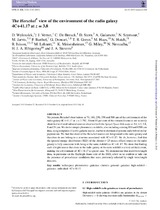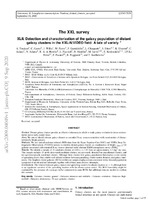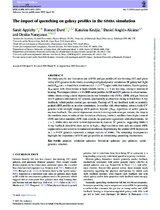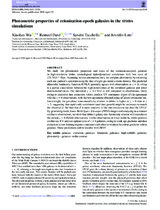| dc.contributor.author | Wylezalek, D. | |
| dc.contributor.author | Vernet, J. | |
| dc.contributor.author | De Breuck, C. | |
| dc.contributor.author | Stern, D. | |
| dc.contributor.author | Galametz, A. | |
| dc.contributor.author | Seymour, N. | |
| dc.contributor.author | Jarvis, Matt | |
| dc.contributor.author | Barthel, P. | |
| dc.contributor.author | Drouart, G. | |
| dc.contributor.author | Rottgering, H.J.A. | |
| dc.contributor.author | Greve, T.R. | |
| dc.contributor.author | Haas, M. | |
| dc.contributor.author | Hatch, N. | |
| dc.contributor.author | Ivison, R.J. | |
| dc.contributor.author | Lehnert, M. | |
| dc.contributor.author | Meisenheimer, K. | |
| dc.contributor.author | Miley, G. | |
| dc.contributor.author | Nesvadba, N. | |
| dc.contributor.author | Stevens, J.A. | |
| dc.date.accessioned | 2016-02-11T10:29:29Z | |
| dc.date.available | 2016-02-11T10:29:29Z | |
| dc.date.issued | 2013 | |
| dc.identifier.citation | Wylezalek, D. (2013). The Herschel* view of the environment of the radio galaxy 4C+41.17 at z = 3.8. Monthly Notices of the Royal Astronomical Society, 428 (4): 3206-3219 | en_US |
| dc.identifier.issn | 0035-8711 | |
| dc.identifier.uri | http://hdl.handle.net/10566/2073 | |
| dc.description.abstract | We present Herschel observations at 70, 160, 250, 350 and 500 μm of the environment of the
radio galaxy 4C+41.17 at z = 3.792. About 65 per cent of the extracted sources are securely
identified with mid-infrared sources observed with the Spitzer Space Telescope at 3.6, 4.5, 5.8,
8 and 24 μm.We derive simple photometric redshifts, also including existing 850 and 1200 μm
data, using templates of active galactic nuclei, starburst-dominated systems and evolved stellar
populations. We find that most of the Herschel sources are foreground to the radio galaxy and
therefore do not belong to a structure associated with 4C+41.17. We do, however, find that
the spectral energy distribution (SED) of the closest (∼25 arcsec offset) source to the radio
galaxy is fully consistent with being at the same redshift as 4C+41.17. We show that finding
such a bright source that close to the radio galaxy at the same redshift is a very unlikely event,
making the environment of 4C+41.17 a special case. We demonstrate that multiwavelength
data, in particular on the Rayleigh–Jeans side of the SED, allow us to confirm or rule out
the presence of protocluster candidates that were previously selected by single wavelength
data sets. | en_US |
| dc.language.iso | en | en_US |
| dc.publisher | Oxford University Press | en_US |
| dc.rights | © 2013 copyright Oxford University Press. This file may be freely used for educational purposes, as long as it is not altered in any way. Acknowledgement of the authors and the source is required | |
| dc.source.uri | http://dx.doi.org/10.1093/mnras/sts264 | |
| dc.subject | Cosmology | en_US |
| dc.subject | Galaxies | en_US |
| dc.subject | Photometric – galaxies | en_US |
| dc.subject | General – galaxies | en_US |
| dc.subject | High-redshift – galaxies | en_US |
| dc.subject | Herschel observations | en_US |
| dc.subject | Radio galaxy | en_US |
| dc.subject | Spitzer Space Telescope | en_US |
| dc.subject | Spectral energy distribution (SED) | en_US |
| dc.title | The Herschel* view of the environment of the radio galaxy 4C+41.17 at z = 3.8 | en_US |
| dc.type | Article | en_US |
| dc.privacy.showsubmitter | false | |
| dc.status.ispeerreviewed | true | |
| dc.description.accreditation | Web of Science | en_US |




